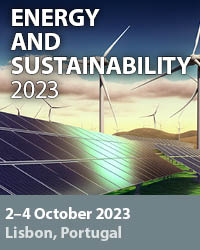The Environmental And Economic Aspects Of A Biogas Power Plant
Price
Free (open access)
Transaction
Volume
186
Pages
12
Page Range
149 - 160
Published
2015
Size
711 kb
Paper DOI
10.2495/ESUS140131
Copyright
WIT Press
Author(s)
Gy. Szabó, I. Fazekas, K. Kisari, T. Buday, G. Szabó, Sz. Szabó, M. Paládi, A. Kerényi
Abstract
In the present study we examined the carbon footprint of a biogas power plant in eastern Hungary, and the economic aspects of its operation. About 65% of the raw materials are transported from within a 12 km radius of the surrounding area; however, the remaining 35% arrives from distances greater than 90 km. In 2013 – taking into consideration the complete life cycle of the power plant – the GHG (greenhouse gases) emission linked to each operational phase was 208,173 kg CO2 equivalent, which is only 6.3% of the emission accompanying the production of the same quantity of energy in the Hungarian energy structure; therefore, from an environmental perspective, the energetic utilization of biogas is quite favorable. It became clear during an investigation into the economic aspects of the power plant’s operation that in the current conditions its operation is on the margins of sustainability. The acquisition of raw materials must be rethought and rationalized. This can be achieved by 1) the replacement of the relatively expensive self-produced feedstock by easily fermentable (bio) waste materials, and 2) the radical reduction of transportation distances. Moreover, it is imperative to find possible ways to utilize the surplus thermal energy and the sale of the fermented manure (biomanure) produced.
Keywords
biogas power plant, carbon footprint, GHG emission, cost-benefit analysis





